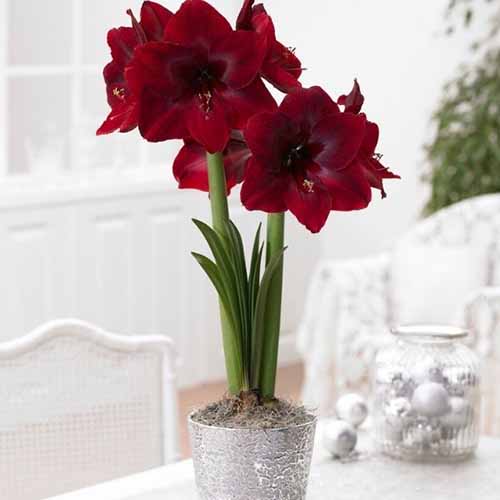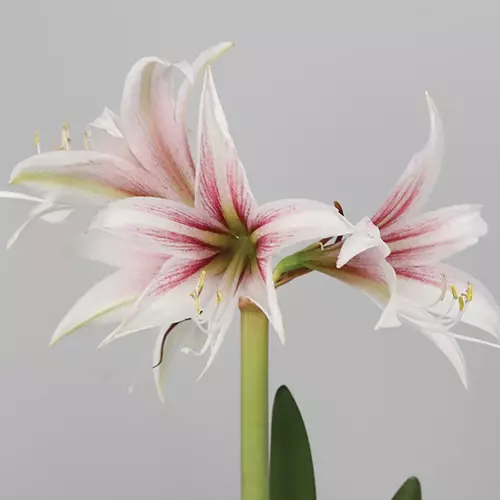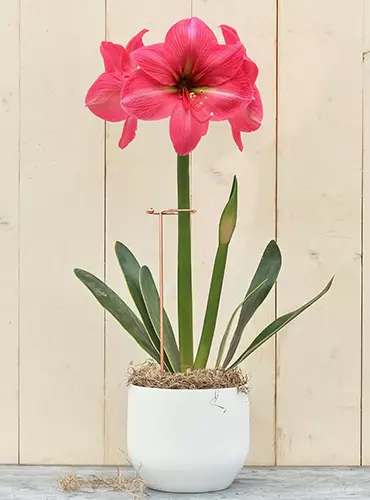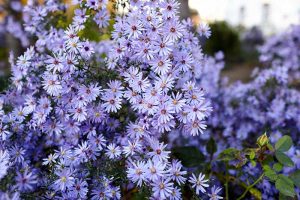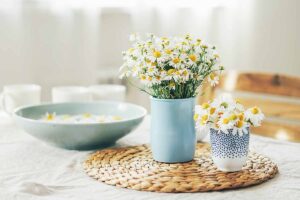With magnificent blooms in vibrant colors, amaryllis (Hippeastrum spp.) is the darling among forced winter bulbs.
These frost-tender tropical plants are hardy in USDA Zones 9 to 11, but they respond well to forcing indoors, producing one to three thick stems with up to six trumpet-shaped flowers per stem.
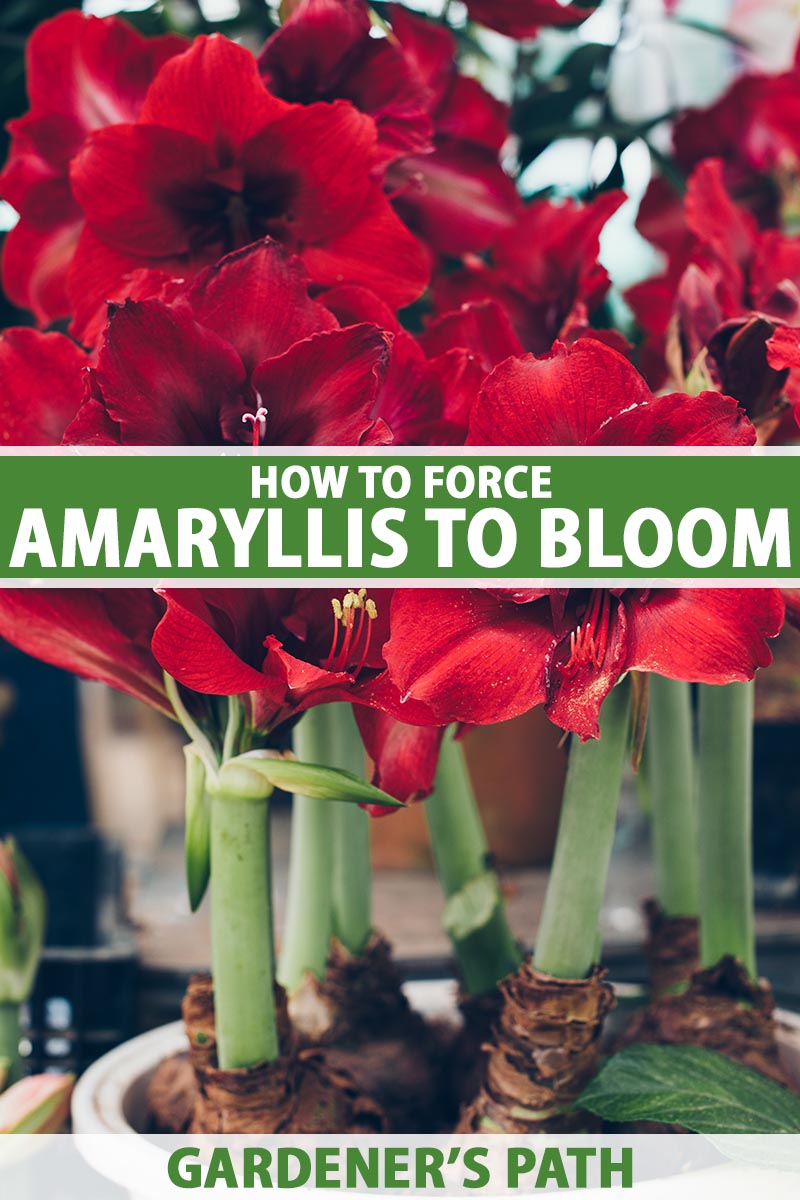
We link to vendors to help you find relevant products. If you buy from one of our links, we may earn a commission.
While the garden’s asleep, the single or double blooms add dramatic color to the home in rich shades of maroon, orange, pink, salmon, scarlet, white, and yellow, as well as bicolors and some with contrasting picotee edges.
And despite each bulb’s large size, they don’t require a big container to grow in and do best in smaller pots.
Grown singly, they make a striking focal point. Planted in multiples, they create a spectacular, showy display.
Plus, they make a superb gift for any gardener, from greenhorn to green thumb!
If you’d like to enjoy some of these tropical beauties in your home this winter, join us now for all the details on how to force amaryllis indoors.
Here’s what we’ll cover:
What You’ll Learn
Amaryllis Basics
The familiar, large-flowered amaryllis bulbs of the winter season belong to the Hippeastrum genus of the Amaryllidaceae family. This genus contains over 90 species and hundreds of cultivars – with amaryllis among the most dazzling.
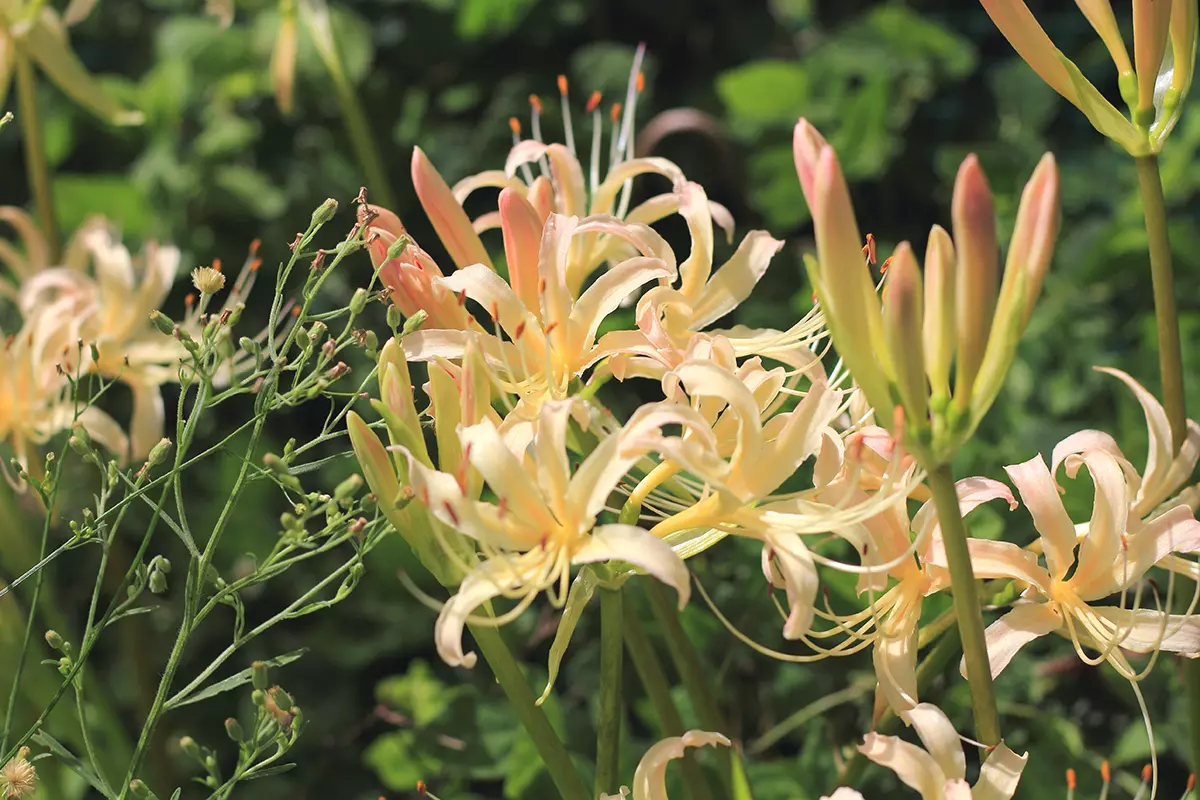
The big bulbs – with a 10- to 14-inch circumference – that arrive in shops in autumn are Hippeastrum hybrids, originally from the tropical and subtropical regions of the Caribbean and parts of Central and South America.
“True” plants in the genus Amaryllis are known commonly as belladonna lily, Jersey lily, or naked-lady lily.

For clarity, in this article the word amaryllis, without italics, is used as the common name for plants in the Hippeastrum genus.
Hippeastrum bulbs produce one to three flower stems, or scapes, of 18 to 25 inches in length, and develop two to six large, star-shaped flowers per stem.
Long, strappy leaves of glossy dark green typically appear after the flowers and grow up to 36 inches long.
In nature, Hippeastrum plants flower in spring or summer, but have become highly popular for forcing into early bloom over the winter holidays.
And because the blooms don’t open all together, the flowering period can last for several weeks.
As tender perennials, most are hardy only in Zones 9 to 11. But if they are tended to properly, potted bulbs can live for decades, with anecdotal reports of bulbs being passed on from generation to generation.
Forcing them to flower is best done in a container filled with soil where the moisture can be easily controlled.
Hydroponic or water-only growth makes the bulbs susceptible to mold and rot, but can be done successfully with care – more on this in a bit.
And it should also be noted that ingestion may cause stomach upset in people and all plant parts are toxic to cats, dogs, and horses.
Choosing Bulbs
For the best floral display, purchase the largest bulbs available.
Large bulbs are more likely to produce a second or third stem in their first year – which means more of those sumptuous flowers! Smaller ones typically only produce one flower stalk in their first year.
Check that bulbs are free of blemishes, mold, and soft spots, discarding any with signs of fungal damage.
Cultivars to Select
The Hippeastrum genus has over 600 named cultivars to date, so you’ll never be wanting for variety!
Discover 17 recommended amaryllis varieties in our guide. Here are a few favorite suggestions to get you started:
Black Pearl
Dark and dramatic, ‘Black Pearl’ produces handsome, six- to eight-inch flowers of deep burgundy with a fantastic, light-reflective pearlescent sheen.
Plants grow 16 to 24 inches, developing one to three stems with three to five blooms per stem. Expect flowers six to eight weeks after planting.
You can find ‘Black Pearl’ bulbs available at Nature Hills Nursery.
Cherry Nymph
There’s no need for poinsettias with the elegant ‘Cherry Nymph’ on display. The full, double blooms are deep cherry red with a hint of white lightly streaking the ruffled petals and tips – perfect colors for the holidays.
These sturdy plants produce large, eight-inch flowers in clusters of four on one or two stems. Flowers appear six to nine weeks after planting.
‘Cherry Nymph’ bulbs can be found at Eden Brothers in packages of one, three, and five.
Sweet Lilian
With delicate, orchid-like flowers, ‘Sweet Lilian’ enchants with ribbon-like petals streaked in rose to magenta, and fading to white at the edges and tips.
The large bulbs develop two stems with four to six large, six-inch flowers and grow 16 to 24 inches in height. Expect flowers six to eight weeks after planting.
‘Sweet Lilian’ bulbs are available at Burpee.
Potting Up
For healthy growth with maximum flowers, choose a well-draining pot that’s about two inches wider than the bulb’s diameter and no more than twice its height.

This may seem inadequate with regard to the bulb’s size, but they actually do better in a tight-fitting, root bound environment.
Ensure pots have adequate drainage holes and that they have some substance to them to counteract the weight of full blooms, to prevent tipping.
If needed, lay down an inch of pebbles over the drainage hole to add a bit of weight, or plan to place containers in a sturdy cachepot.
Add a few inches of a humus-rich, well-draining potting medium to the bottom of the container.
Before planting, soak the roots in water for at least one hour, or overnight.
Use a shallow bowl and set bulbs root-end down, then add one-half to one inch of tepid water to rehydrate the basal plate and roots. Do not submerge bulbs entirely.
After soaking, gently dab with a paper towel to remove excess moisture.
Sit the bulb on the soil so about one-third of the bulb’s top, or neck, is above the soil line, adding more soil to fill in around the edges as needed. Keeping the neck above the soil helps to prevent rot.
At this time, it’s also a good idea to set a stake or two in place to provide support for leaves and stems as they grow.
A handy, adjustable copper stake for amaryllis, orchids, and other long-stemmed flowers is available at Burpee.
Read more in our guide to amaryllis support stakes.
If desired, you can cover the soil with decorative glass marbles, moss, or pebbles.
Water the soil gently but thoroughly, until water comes out of the drainage hole.
Place the pot in a saucer and don’t water again until new growth emerges, in two to eight weeks.
Set your container in a bright, sunny location.
After growth emerges, maintain soil moisture so it’s slightly moist but not wet.
Temperature and Location
The ideal conditions for forcing amaryllis blooms indoors include an environment with six hours of bright or direct sunlight and temperatures in the range of 60 to 80°F.
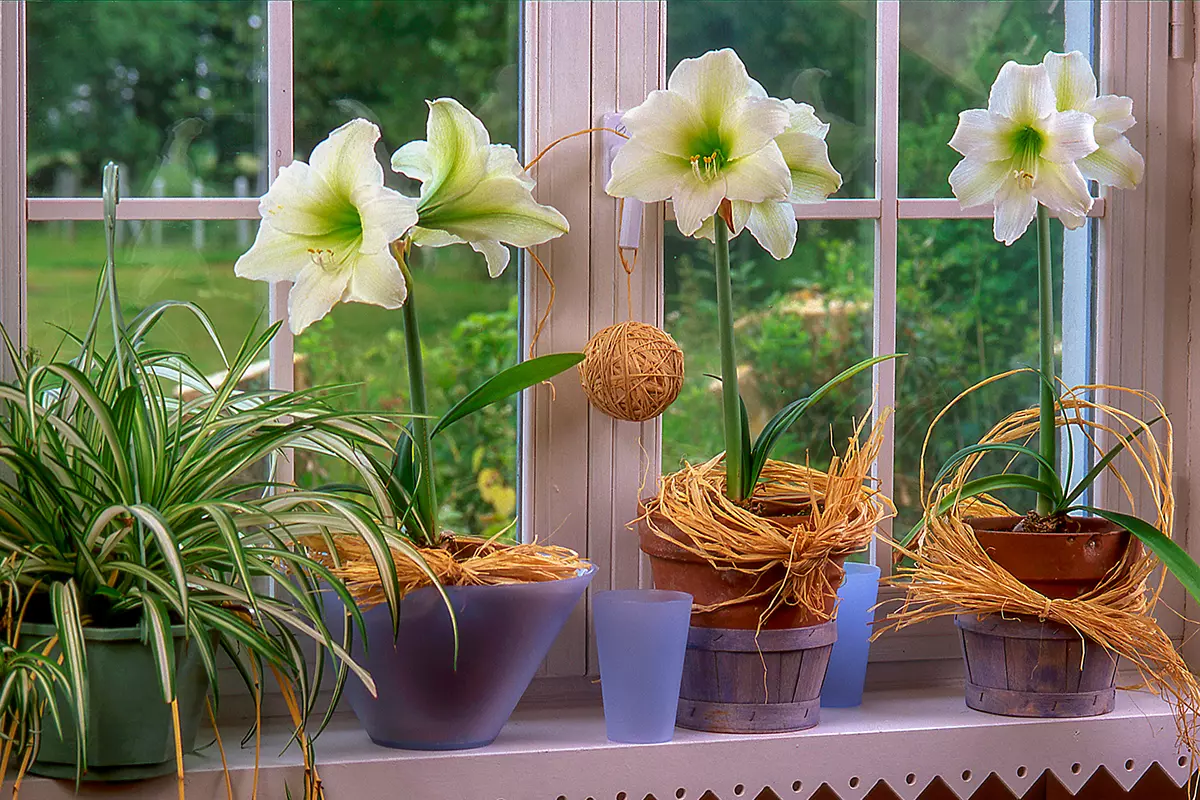
If needed, you can try to stimulate the bulb to grow by placing its container on a heating mat until growth emerges.
Once the flower scapes appear, rotate pots a quarter turn every day or two to ensure stems grow straight and true.
Just before flowers open, move containers out of direct sunlight and into a cooler spot with bright but indirect light – flowers last the longest in a cooler location around 65°F and out of direct sunlight.
Food and Water
Once new growth emerges, water regularly to maintain slightly moist soil while avoiding waterlogged conditions. Allow the soil surface to dry between watering.
After flowering, feed every three to four weeks with a diluted, half-strength solution of a water-soluble, balanced fertilizer with an NPK ratio such as 10-10-10.
Waxed Bulbs
Waxed bulbs are the simplest to grow and don’t require water or soil, because they contain everything necessary to flower on their own.
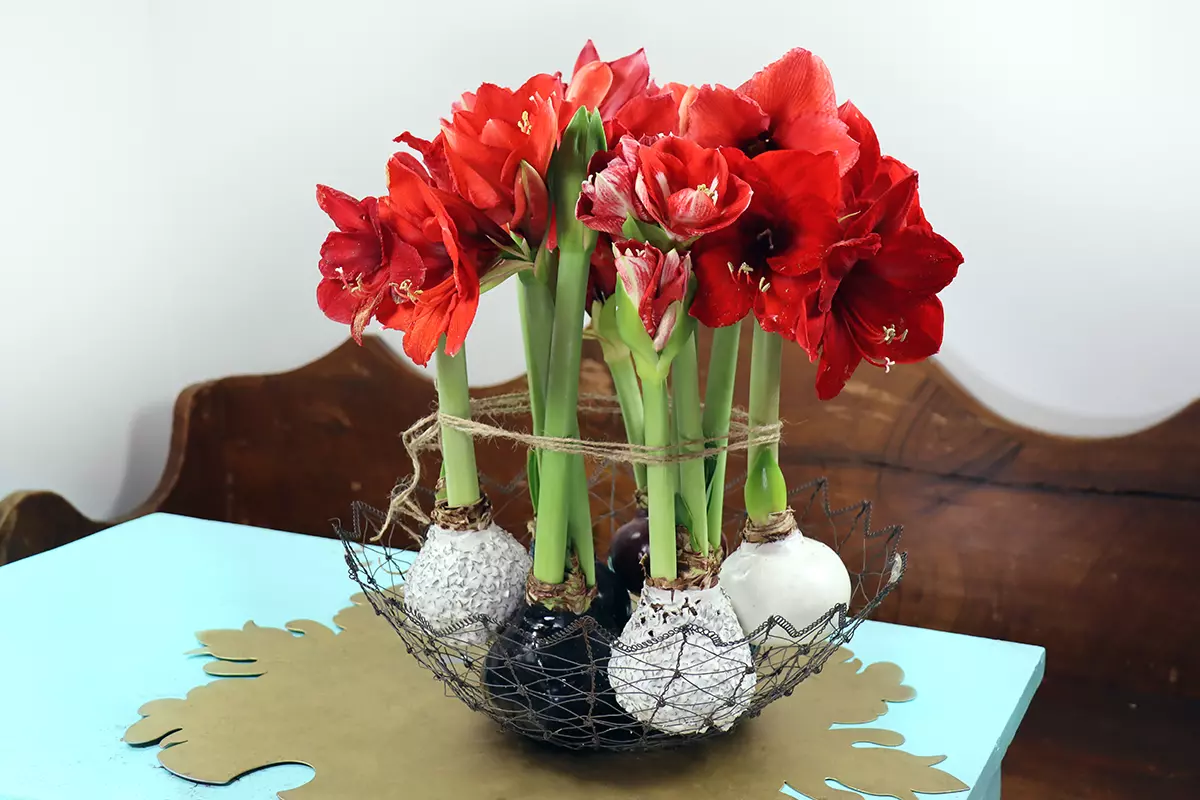
Simply place the bulbs on a flat saucer or dish and set in a room with bright but indirect light.
Rotate them a quarter turn every day to help the stems grow straight after they emerge.
Waxed bulbs typically flower four to six weeks after shipping.
After flowering, you can remove the wax and try to save the bulb, but success is rare and most people dispose of these in the compost or garbage.
Ideal for the non-gardening flower lover, Gold Brush waxed amaryllis produces large, pure white flowers. The wax covering is stylishly streaked with black and gold brushstrokes suitable for any setting.
Bulbs develop one or two stems growing 20 to 25 inches with four or five six-inch flowers that bloom four to six weeks after delivery – without any water or soil!
Forcing in Water
Amaryllis can be grown in water using a bulb or flower vase and gravel, but the bulb itself must remain out of the water to prevent rot.
Fill the bottom third of a flower vase or the base of a bulb vase with decorative gravel, glass marbles, or pebbles.
Trim and clean the bulb, removing any old roots, dead matter, or soil.
Nestle the bulb, root side down, onto the gravel. Add tepid water to about one inch below the bulb base. The bulb itself should never sit in water, only the roots.
Set the vase in a sunny windowsill and maintain temperatures between 60 and 80°F.
Check the water daily, adding more as needed to maintain the one-inch level. Change the water once a week.
When stems are a few inches high, rotate the vase a quarter turn daily to promote even growth.
Care After Flowering
Although many people toss their bulbs after they bloom in the winter, caring for them is easy and straightforward, and they’ll readily flower again next year in most cases.
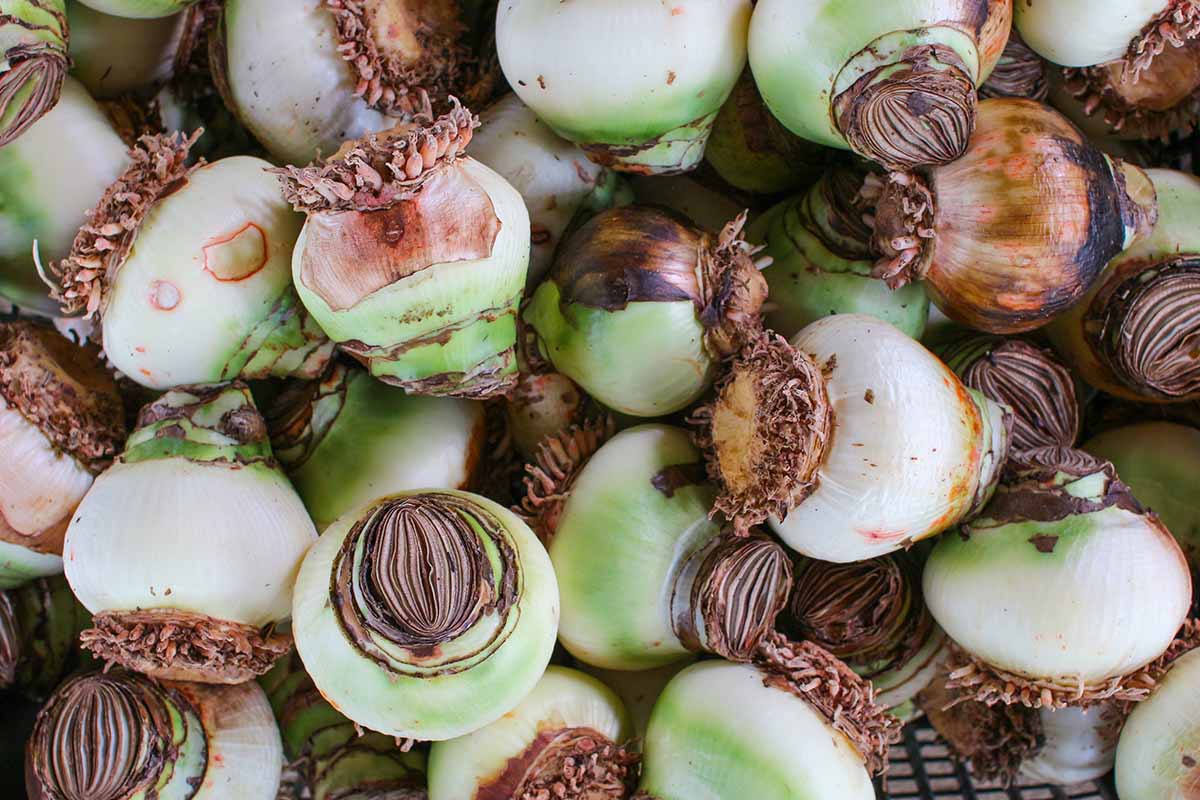
After flowering, cut the scapes a couple of inches below the flowers but keep the leaves in place – they produce energy for the bulb through photosynthesis.
Move pots to a sunny spot in the garden once nighttime temperatures stay above 50°F.
Sink the pot in garden soil up to the rim. Water to keep the soil lightly moist and feed regularly with a balanced 10-10-10 NPK fertilizer.
In late summer, dig them up and bring the pots back indoors to a sunny location, after cleaning as needed and checking for pests.
For amaryllis to bloom around the winter solstice towards the end of December 21, bring container plants indoors from mid- to late August.
Withhold water and fertilizer to force them into dormancy. After the leaves yellow and die back, remove them.
It takes the leaves about four weeks to die back, so the dormancy period will start around the end of September.
Once the leaves are gone, move pots to a cool, dark location for eight to 10 weeks of rest – temperatures of 50 to 60°F are ideal.
See our supplemental guide, “How to Care for Amaryllis After Flowering,” for a deeper dive.
After resting, move bulbs back to a sunny spot indoors to start the flowering cycle again. Replace the top two inches of soil with fresh potting medium and water thoroughly.
Flowers typically appear six to eight weeks later. Adjust the timeline to encourage later blooms if desired.
Bulbs should be repotted every three or four years.
For more tips on how to care for amaryllis, refer to our growing guide.
A Winter Favorite
With their beautiful, bold blooms and easy cultivation, forcing amaryllis to flower indoors is fun and rewarding – and you can save the bulbs for years of enjoyment!
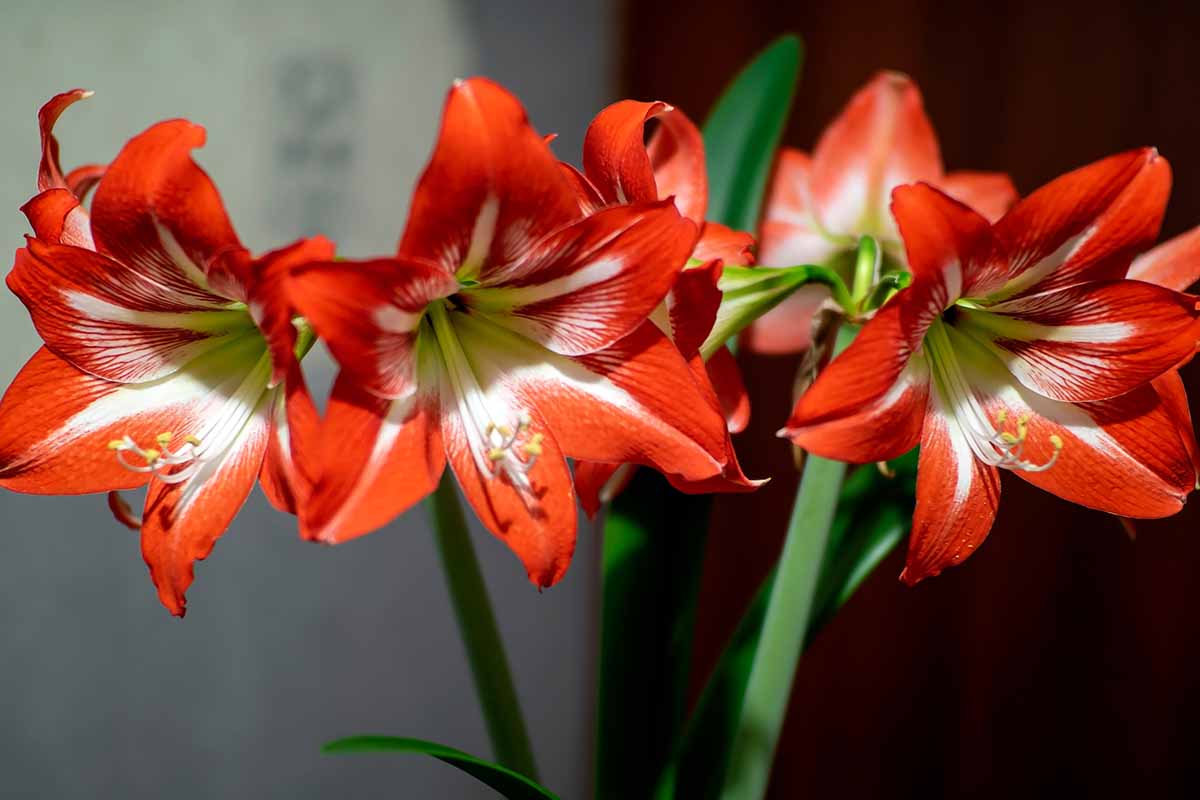
Grow them in small pots of soil for the best results and remember to turn the containers daily to prevent leaning towards the sun.
Set pots out in the garden after flowering, then bring them indoors at summer’s end for another winter of dramatic blooms!
Do you folks grow amaryllis indoors? Tell us about your favorite varieties for forcing in the comments section below.
And for more information about growing amaryllis, add these guides to your reading list next:
